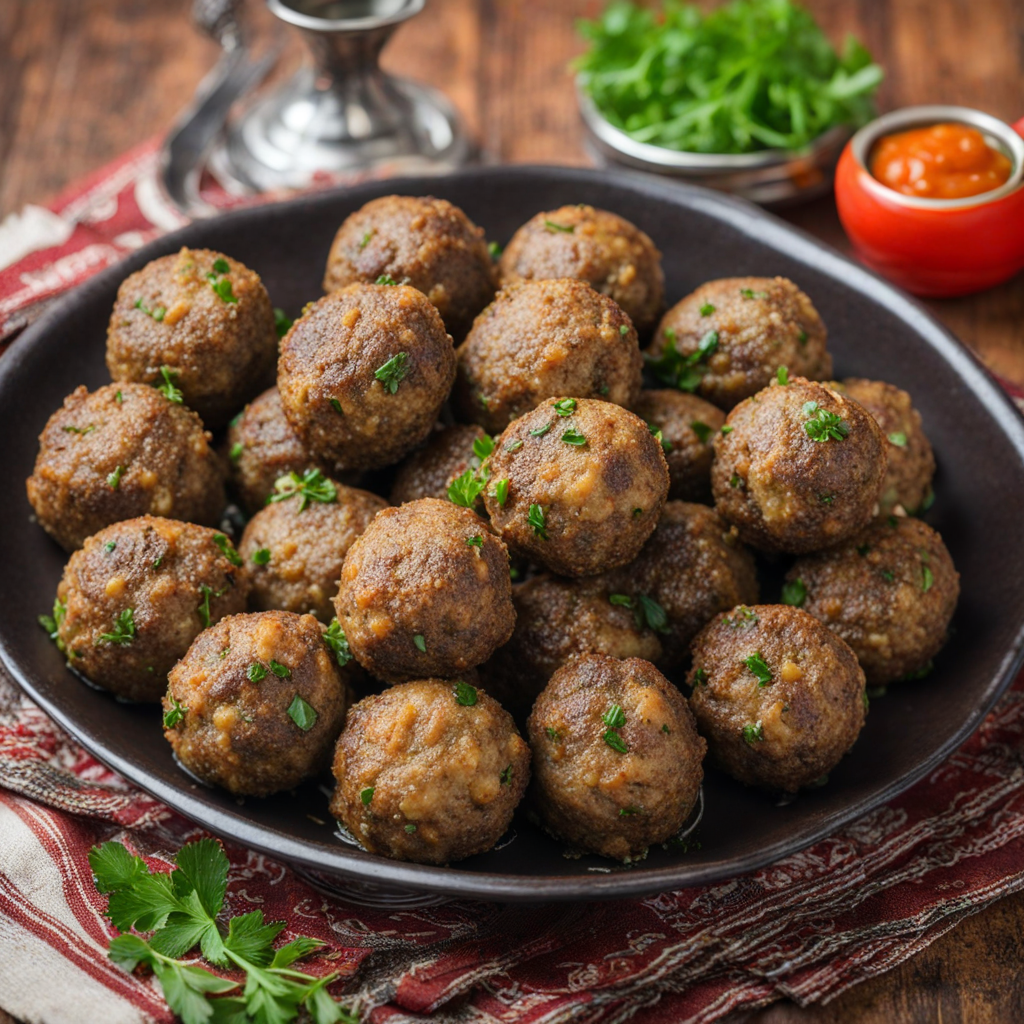Rice Pudding
Rice pudding, or "Roz Bel Laban," in Morocco is a delightful dessert that offers a perfect balance of creaminess and subtle sweetness. This traditional dish is made by simmering rice in milk, which creates a luscious, velvety texture. The rice absorbs the richness of the milk, transforming into tender grains that melt in your mouth. Often flavored with a hint of vanilla or orange blossom water, each bite transports you to the bustling markets of Morocco, where the aroma of spices and sweets fills the air. What sets Moroccan rice pudding apart is the addition of aromatic spices such as cinnamon and sometimes a sprinkle of nutmeg, which imbue the dish with warmth and depth. It is not uncommon to find it topped with a scattering of crushed nuts, such as almonds or pistachios, which add a delightful crunch that contrasts beautifully with the creamy base. The combination of textures and flavors in this dessert is a testament to Morocco's rich culinary heritage, showcasing a blend of influences from Arab, Berber, and Mediterranean cuisines. Served chilled or at room temperature, Moroccan rice pudding is often garnished with a dusting of cinnamon or a drizzle of honey, elevating its sweetness and inviting presentation. This comforting dessert is a popular choice for family gatherings and festive occasions, symbolizing hospitality and warmth. Whether enjoyed as a simple treat after a meal or as part of a grand feast, Roz Bel Laban is a delicious way to explore the sweet side of Moroccan cuisine, leaving a lasting impression on anyone fortunate enough to taste it.
How It Became This Dish
The Sweet Journey of 'أرز بالحليب' (Arroz al Leche) in Moroccan Cuisine Origin and Historical Context 'أرز بالحليب' (Arroz al Leche), known in English as rice pudding, is a beloved dessert that has found a significant place in Moroccan culinary culture. Its origins can be traced back to the Arab world and ancient civilizations where rice was a staple grain. The use of milk, sugar, and spices like cinnamon and vanilla in cooking rice dates back to the medieval period, influenced by the Islamic Golden Age when culinary practices were richly developed and shared across regions. Rice itself was introduced to North Africa through various trade routes and later through the Moorish influence in Spain, where it became integrated into both Spanish and Moroccan cuisines. The marriage of rice and milk in a sweet dish likely evolved from the Mediterranean tradition of dairy products and cereals, which were fundamental elements of daily sustenance. The historical interplay between different cultures led to a unique Moroccan interpretation of this dish, resulting in 'أرز بالحليب' being cherished not only as a dessert but also as a comfort food. Cultural Significance In Moroccan culture, food is not merely about sustenance; it is a medium for social connection and celebration. 'أرز بالحليب' holds a special place during family gatherings, religious festivities, and communal events. The preparation of this dish often brings families together, where the act of cooking, sharing, and enjoying the delightful flavors embodies warmth and unity. During Ramadan, the holy month of fasting, 'أرز بالحليب' becomes a favored item on iftar tables, the meal that breaks the fast. Its comforting and rich texture provides nourishment and satisfaction after a day of fasting, making it a beloved choice for many Moroccan families. Moreover, on special occasions such as weddings and Eid celebrations, this dish is often served as a symbol of hospitality and abundance, highlighting the importance of sharing food in fostering community bonds. Ingredients and Preparation The beauty of 'أرز بالحليب' lies in its simplicity and the versatility of its ingredients. Traditional recipes typically call for short-grain rice, milk (often whole milk for creaminess), sugar, and a selection of aromatic spices. The addition of cinnamon, vanilla, and sometimes orange blossom water or rose water elevates the dish, infusing it with a fragrant and delicate flavor profile. The preparation method involves cooking the rice until tender, then combining it with milk and sugar. The mixture is gently simmered to allow the rice to absorb the milk, creating a creamy consistency. The dish is often garnished with ground cinnamon, almonds, or raisins, adding both texture and visual appeal. In modern interpretations, variations of 'أرز بالحليب' have emerged, with some recipes incorporating coconut milk for a tropical twist, or using alternative sweeteners for those with dietary restrictions. Nevertheless, the classic version remains a staple in Moroccan households. Evolution Through Time As with many traditional dishes, 'أرز بالحليب' has evolved over the centuries, adapting to changing tastes and culinary influences. Its journey can be seen as a reflection of Morocco's rich history of cultural exchanges, including influences from Berber, Arab, and French cuisines. In the early 20th century, as Morocco underwent significant social and political changes, the culinary landscape began to shift. The French protectorate introduced new ingredients and techniques, which began to blend with traditional Moroccan cooking. This fusion gave rise to innovative versions of Moroccan rice pudding, where the use of cream became more prevalent, adding an even richer texture to the dish. The globalization of food culture has also played a role in the evolution of 'أرز بالحليب.' As Moroccan cuisine gained international recognition, chefs began to experiment with this classic dessert, incorporating elements from other cultures while still respecting its roots. Today, one can find 'أرز بالحليب' in Moroccan restaurants and cafes around the world, served alongside various pastries and traditional mint tea. Modern-Day Recognition and Global Influence In contemporary Morocco, 'أرز بالحليب' continues to be a cherished dessert, enjoyed by all ages. Its presence in the local culinary scene has been enhanced by social media and food blogging, where home cooks and professional chefs alike share their unique takes on the dish. This digital age has sparked a revival of interest in traditional recipes, encouraging younger generations to reconnect with their culinary heritage. Moreover, 'أرز بالحليب' has transcended its traditional boundaries and has been embraced by international cuisine. Its adaptability allows it to fit into various culinary contexts, from upscale dining establishments to cozy family gatherings. With the rise of fusion cuisine, innovative chefs are reinterpreting this classic dish, infusing it with global flavors and textures, thus expanding its reach and appeal. Conclusion 'أرز بالحليب' stands as a testament to the rich tapestry of Moroccan culinary history. Its evolution from a simple, nourishing dish to a beloved dessert enjoyed across generations highlights the importance of food in cultural identity and social connection. As Morocco continues to embrace its culinary heritage while exploring new influences, 'أرز بالحليب' remains a sweet reminder of the past, a symbol of community, and a delightful experience that transcends borders. Whether enjoyed in a bustling Marrakech market or a quiet family kitchen, this creamy rice pudding encapsulates the essence of Moroccan hospitality and the enduring power of food to bring people together.
You may like
Discover local flavors from Morocco







